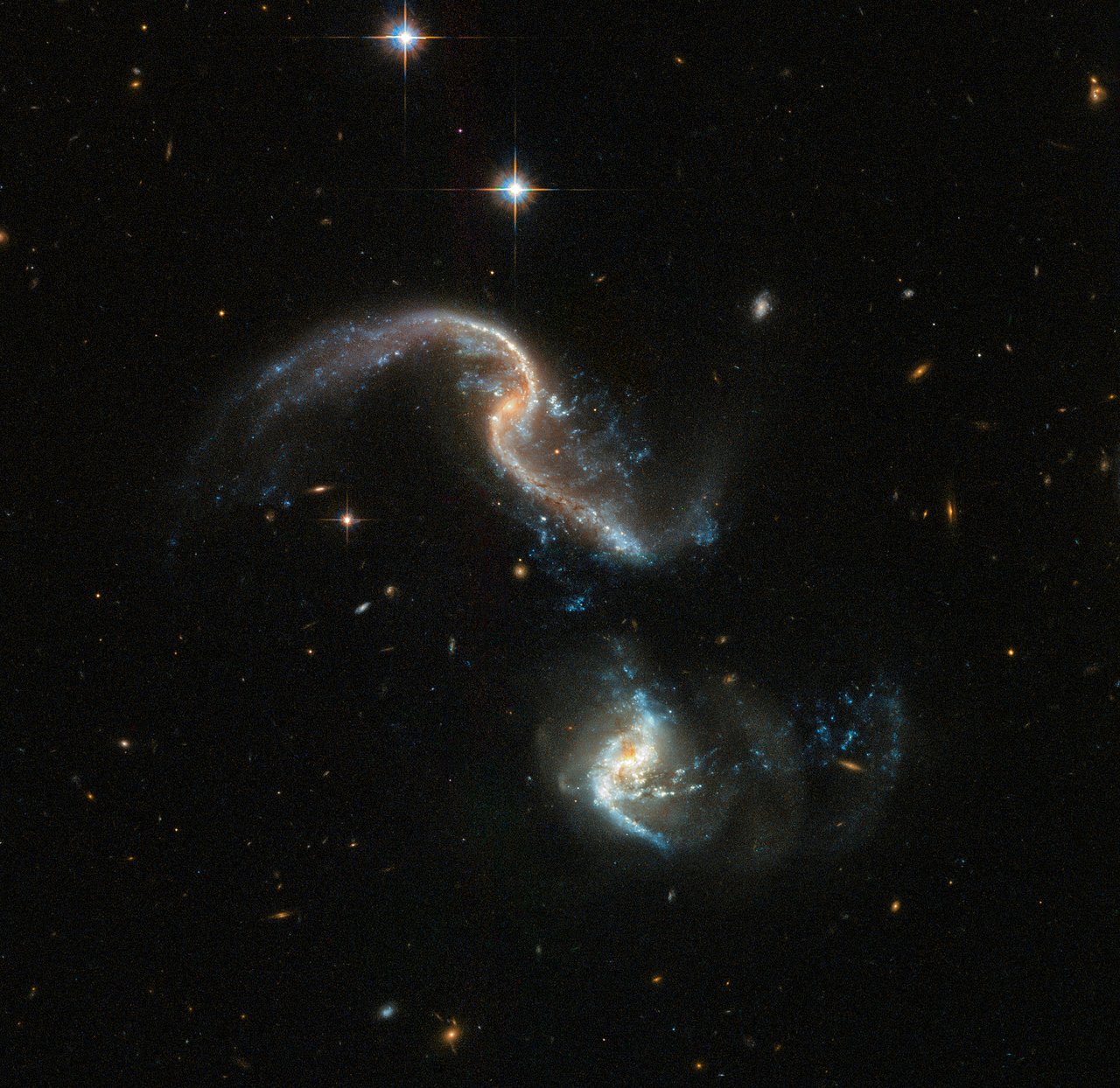Hubble Telescope Spies Gorgeous Galaxy Merger (Video, Photo)
Two merging spiral galaxies are caught twisting each other into cosmic knots in a spectacular photo by the Hubble Space Telescope.
The colliding galaxies comprise a system known as Arp 256, which lies about 350 million light-years from Earth, in the constellation Cetus (the Whale).
"The galaxies are ablaze with dazzling regions of star formation: The bright blue fireworks are stellar nurseries, churning out hot infant stars," officials with the European Space Agency (ESA) wrote in a description of the image Thursday (March 8). (The Hubble project is a collaboration between NASA and ESA.)
"These vigorous bursts of new life are triggered by the massive gravitational interactions, which stir up interstellar gas and dust out of which stars are born," the ESA added.

The merger is still in its early stages. The two galaxies will continue coming together for millions of years, eventually forming a single large structure, ESA said.
Such galactic mergers are common throughout the universe. Our own Milky Way likely already has a few under its belt, and it's headed for another dramatic crash, with the neighboring Andromeda galaxy in about 4 billion years. But our distant descendants won't have to worry about that much (if they're still alive): The spaces between stars are so enormous that few if any will actually collide with each other, astronomers have said.
The Arp 256 image is a new version of a photo that was released back in 2008, ESA officials said. It's comprised of data gathered by two Hubble instruments, the Advanced Camera for Surveys and the Wide Field Camera 3.
Get the Space.com Newsletter
Breaking space news, the latest updates on rocket launches, skywatching events and more!
Hubble launched to Earth orbit in April 1990. The space telescope's primary mirror was famously flawed at the outset, but spacewalking astronauts fixed the problem in December 1993. Astronauts repaired, maintained and upgraded Hubble on four additional servicing missions from 1997 through 2009, and the space telescope continues to study the heavens to this day.
Follow Mike Wall on Twitter @michaeldwall and Google+. Follow us @Spacedotcom, Facebook or Google+. Originally published on Space.com.
Join our Space Forums to keep talking space on the latest missions, night sky and more! And if you have a news tip, correction or comment, let us know at: community@space.com.

Michael Wall is a Senior Space Writer with Space.com and joined the team in 2010. He primarily covers exoplanets, spaceflight and military space, but has been known to dabble in the space art beat. His book about the search for alien life, "Out There," was published on Nov. 13, 2018. Before becoming a science writer, Michael worked as a herpetologist and wildlife biologist. He has a Ph.D. in evolutionary biology from the University of Sydney, Australia, a bachelor's degree from the University of Arizona, and a graduate certificate in science writing from the University of California, Santa Cruz. To find out what his latest project is, you can follow Michael on Twitter.









